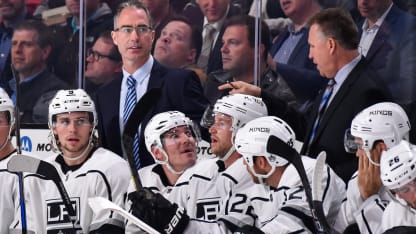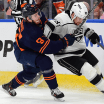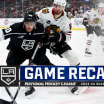On April 23, 2017, the Kings named John Stevens their coach, replacing Darryl Sutter, who was fired April 10. The new staff, which includes Dave Lowry, Don Nachbaur and Pierre Turgeon, has not required much transition time to get the most out of the lineup.
There is a metric that attempts to evaluate a coach's performance, based on how a coach's team has fared in the standings, relative to the prior season. To make it fair for those who coach particularly good or bad teams, results from the previous season are moved 35 percent toward the NHL average before the comparison is computed. With this metric, coaches have to keep good teams good and help bad teams improve by more than an average amount.
The Kings have already earned 5.9 more points than expected this season, according to this formula. Stevens was not expected to enjoy immediate success. Prior to this season, Stevens coached 267 NHL games and his teams finished 6.4 points below those expectations. In 480 games in the American Hockey League, his teams finished 9.5 points below expectations. Based on a weighted average of these results, Stevens ranked No. 26 among the NHL's 31 coaches, with minus-1.4 points per 82 games.



















